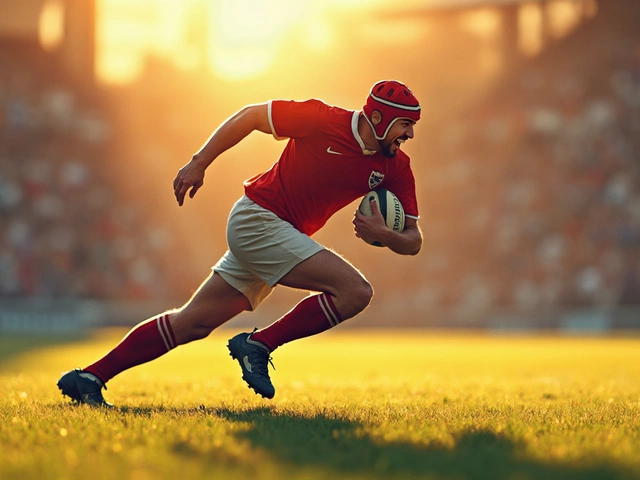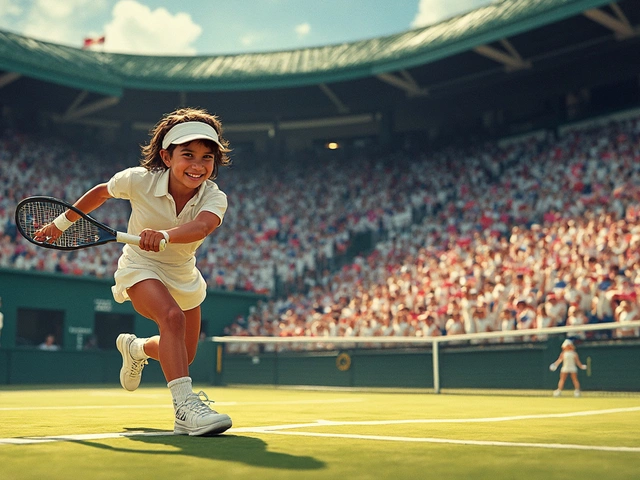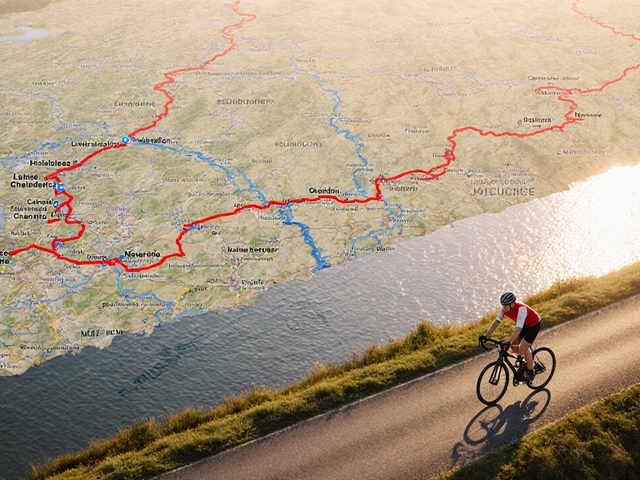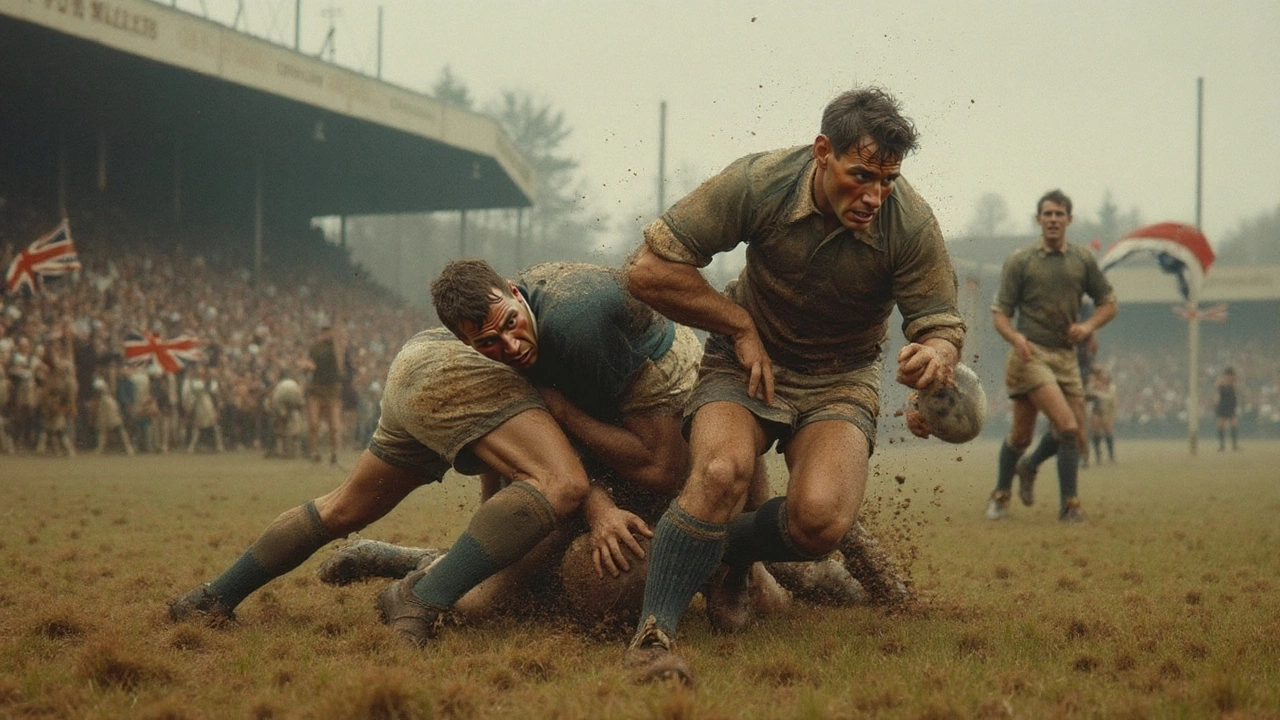
General Sports August 5, 2025
Why Is It Called a Jackler in Rugby? The Story Behind Rugby's Fierce Turnover Specialist
If you’ve spent any time in rugby circles, one word always gets the room buzzing: jackler. It’s tossed around in pub debates, on training grounds from Auckland to Dublin, and even pops up in crisp coaching manuals. The funny thing? Most fans can spot a jackler’s handiwork during a game—diving over the ball for that crucial turnover or forcing sloppy hands from the opposition—but ask them where the name "jackler" actually comes from, and you’ll get a mix of shrugs or wild guesses. The nickname feels like it belongs in a Victorian heist movie more than a game played by hulking forwards and lightning backs. But the journey from wild bush cats to bruised rugby knuckles is a tale worth telling, and that’s exactly what I’m going to lay out for you.
The Jackler: What It Means and Why It Matters
Before you can figure out why it’s called a jackler, you have to know what a jackler actually does. In rugby, a jackler is that special type of player who has a knack—an almost greedy instinct—for getting his hands on the ball at the breakdown. Picture this: a tackle drops a ball carrier to the turf, and suddenly the field becomes a crime scene. The tackled player’s support rushes in, desperate to keep their team in control of the ball. But lurking—like a fox in a chicken coop—is the jackler, waiting for just the right moment to swoop over the ball, clamp down with ferocious grip, and try to wrest possession away for his teammates.
The move isn’t just gutsy. It’s explosive, loaded with risk. Done right, a successful jackler draws a penalty against the attacking team (for not releasing the ball after being tackled), or just snatches the ball directly, flipping the game’s momentum. Done wrong, he draws a penalty or gets clobbered by a counter-ruck. It sounds simple, but the jackler’s job is anything but. You need freakish upper body strength, quick decision-making, and a set of shoulders that can survive being hammered flat almost every Saturday.
Some of the game’s best, like Richie McCaw or David Pocock, made their careers on this art. And while every forward might try their hand at it, the true jacklers rise above the chaos. It’s not enough to want the ball—you need the timing, technique, and borderline recklessness to go after it.
The Etymology: Where Did “Jackler” Come From?
Here’s the bit that gets spicy at dinner tables: tracing "jackler" back to its sources is a rugby version of time travel. There’s no perfectly documented moment when the word just fell off someone’s tongue, but the best theories all circle the same root—"jackal," the animal. Jackals in the wild are known for being opportunistic. They steal scraps, pick off leftovers, and dart in before the lions even realize what happened. Rugby fans started using “to jackal” as a verb for the act of snatching the ball at the breakdown, especially when you pick it right from beneath someone’s nose.
At some point, probably in the UK or South Africa during the mid-2000s, the term "jackler" started sticking for the player who possesses these sneaky, predatory traits. It’s a simple blend of jackal with a little sporting lingo smoothed in. Tough defenders and openside flankers became known for “jackaling” the ball, turning jackal into jackler. And so, English rugby slang gained a fresh word that even dictionaries haven’t caught up to.
Some places still stick to saying "the flanker is jackaling," but chat with any passionate player or fan and they’ll know a “jackler” isn’t just a thief—it’s near-mythical status. TV commentators gradually adopted the term, and once World Rugby’s own coaching clinics started mentioning jacklers, it became official lingo. So next time someone tells you rugby is slow to embrace new words, remember: jackler snuck in, much like its namesake.
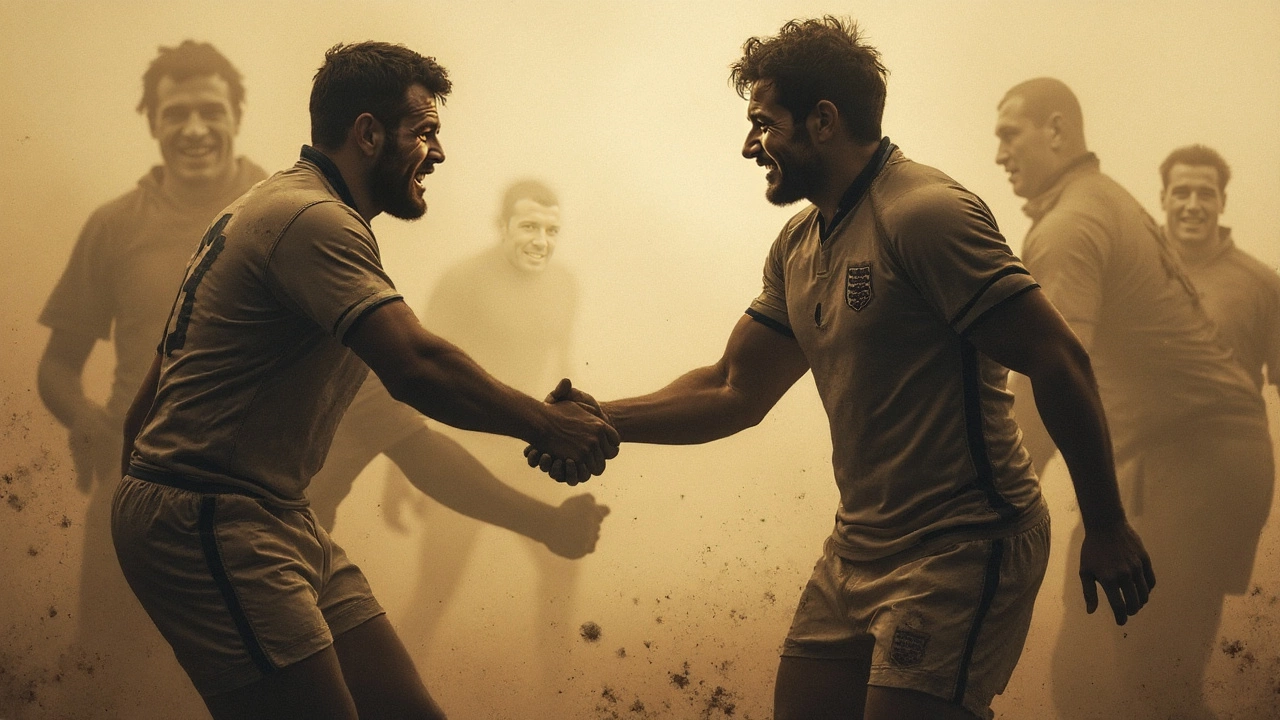
Specialists at Work: What Makes a True Jackler?
- Explosive power—the kind you get from spending hours in the squat rack or flipping tractor tires.
- Cat-quick agility—the ability to change direction or dance over bodies like you’re dodging puddles.
- A killer mindset—a borderline obsession with turning over possession.
- Endless stamina—you’re going to get battered, but the jackler’s work only ends at the final whistle.
These skills sound basic on paper. After all, every rugby player wants to be strong, fast, and tough. But what sets jacklers apart is how they combine these assets under battlefield conditions. Watch any test match, and you’ll see jacklers scanning the breakdown, knee pads muddied, eager for half a second’s opening. They squat over the tackled player, plant their hands on the pill, and brace for a shunt. The ref’s whistle can either mean sweet relief or another bruising tackle. The reward is huge—a turnover at the right time can shift a game’s momentum like a lightning bolt.
Technique is everything here. You don’t just dive in and hope. The jackler has to stay on his feet, target the ball, and clamp his elbows in tight before the ruck forms. That split-second makes all the difference. Modern training is obsessed with drilling jackal skills: players do practice reps pulling at medicine balls as coaches try to drag them off balance, simulating the chaos of a live breakdown. And if you think you can skip the gym? Forget it. Just ask David Pocock, who credits his steely grip and low stance to relentless hours in the weight room. Missing the mark even by an inch means you’ll get cleaned out—or worse, pinged by the ref.
There are no shortcuts to building the “jackler” instincts. Some of the most feared in the business will tell you it’s almost a sixth sense. It’s about reading a play three moves ahead, sensing weakness, and knowing exactly when the ball carrier’s support is just a split-second late. Some coaches try to breed this from day one, while others say it’s pure instinct—you’re either born a jackler, or you aren’t. But anyone can develop breakdown skills with enough sweat and good coaching.
Jackler Legends: Famous Faces and Iconic Moments
If you want to know what really makes a jackler so influential, just look at the highlight reels. Some of the greatest names in rugby history have made their reputation from snatching the ball when nobody thought it was possible. Take Richie McCaw, for example. You’d be hard pressed to find a New Zealand test victory where he wasn’t at the heart of a killer turnover. Then there’s Michael Hooper, who seems to pop up in places you didn’t even know were on the field, ready to pounce on a loose ball before you finish your sip of tea.
That ability to turn defense into lightning fast attack means jacklers pile up “game-changing plays.” Another legend, David Pocock, was known for not just stealing the ball, but drawing vital penalties in the dying minutes of test matches. Wales’ Sam Warburton spent years shutting down attacking phases with almost boring consistency—watching him on defense was like watching a lion stalking the pride’s meal, patient and inevitable. And don’t forget Maro Itoje, who’s taken the role into new territory with England by blending a lock’s height with the knack of a breakdown thief. These names shaped matches, forced coaching strategies to adapt, and changed the way fans see turnovers—not as isolated lucky moments, but as planned weapons.
Modern jacklers are also science buffs. They’ll work with their team’s data analysts to track breakdowns per game, study opposition ruck efficiency, and tweak their own technique to stay ahead of rule changes. You can spot a jackler not just from his muddy jersey, but from the way he studies replays and adjusts to every referee’s quirks. This attention to detail—measured in milliseconds and micro-movements—keeps the greats on top year after year.
Want proof of a jackler’s impact? Just check the stats on teams who have the highest turnover rates at ruck time. They almost always outscore or outplay those who can’t secure the breakdown battle. That’s why every international coach, from Rassie Erasmus to Eddie Jones, names at least one specialist jackler in their squad—sometimes more, just to keep up. It’s not just flair; it’s consistency and patience, honed through thousands of hours of mud, sweat, and early-morning drills.
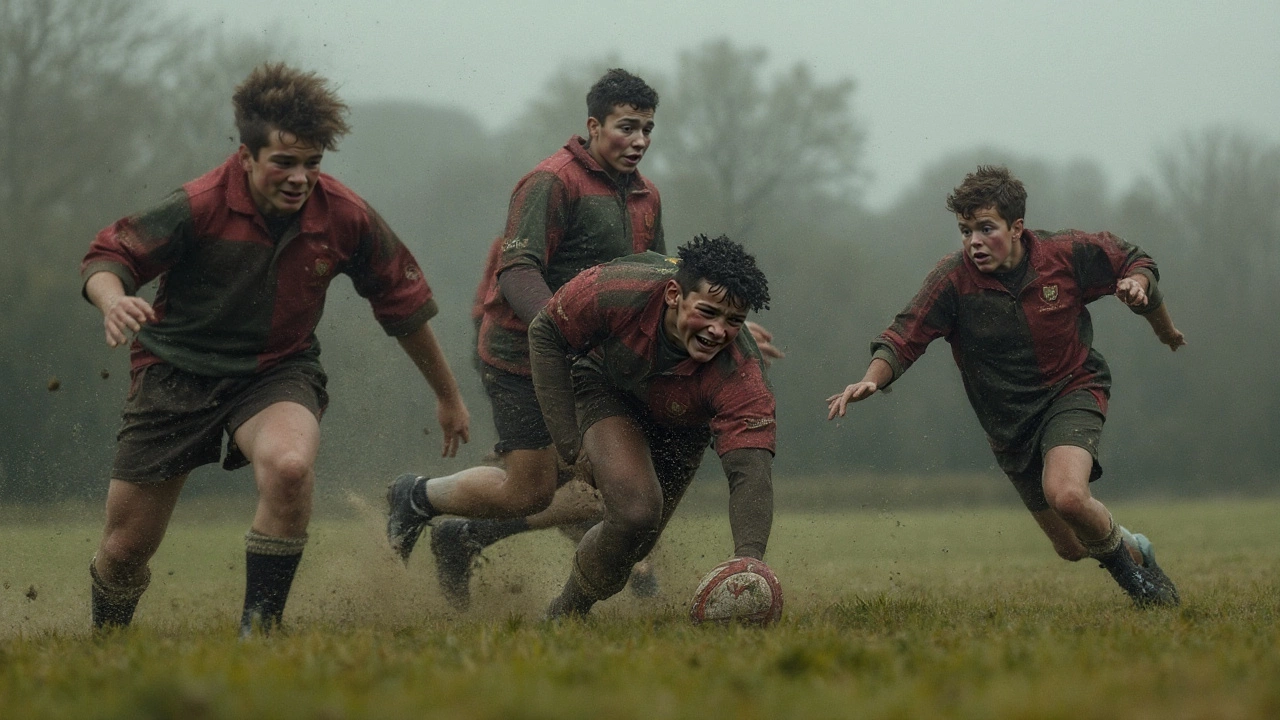
Breaking Down the Art: Drills, Tips, and How to Watch for a Jackler
You don’t have to play at Twickenham or Eden Park to appreciate a good jackler—just watch the body language at your local club. If you’re a player hoping to steal a few moves from the best jacklers out there, it starts with footwork and reading the play. Get low early, hands ready, eyes on the ref. You need to practice quick get-ups—those moments right after a tackle—so you can spot if the support is slow. Drilling with a partner and simulating “live ball” tackles forces your mind to react instantly, not wait for orders.
If you’re a coach, try setting up competitive breakdown scenarios. Put three attackers against two defenders and see who wins possession fastest. Challenge players to stay legal, getting on the ball without dropping a knee or shoulder onto the ground (the key to avoiding a whistle). The best drills add chaos—more bodies, surprised ball drops—so players never settle into a rhythm. It’s messy work, but that’s how you build resilient jacklers who thrive on unpredictable moments.
For fans trying to spot a jackler in action, pay close attention to every ruck. Watch how certain players set their stance, choosing to wait until the last possible moment before going for the ball. They’ll often bend lower than their teammates, elbows in, eyes fixed on the referee before they attack the contact zone. The real trick is staying legal long enough for the whistle, which turns a stolen ball into a penalty for your side. When a match gets tight and nerve-wracking, just remember: the player brave (or cheeky) enough to jackal under that pressure could be the difference between a win and a heartbreak loss. Check World Rugby’s education videos for some slow-motion breakdowns of classic jackler plays—it’s wild how crafty and athletic these players really are.
And if you’re thinking about learning some jackler magic for your own rugby, start with strength training, core stability, and upping your game IQ. Take a page from the pros—many of them work one-on-one with coaches just to refine that *one* move. It’s all about timing, technique, and commitment. Try watching some old-school Springboks or All Blacks matches—trace how the role of jackler has evolved over the past 20 years. Spotting risks and rewards, learning positioning, and building your mental checklist all add up. And never be shy about asking the wily veterans on your own team for stories. The best jacklers love sharing their secrets. So next time you hear someone shout “that’s world-class jackling,” you’ll know exactly what to look for and just how the term clawed its way from the wild, right onto rugby’s biggest stage.

